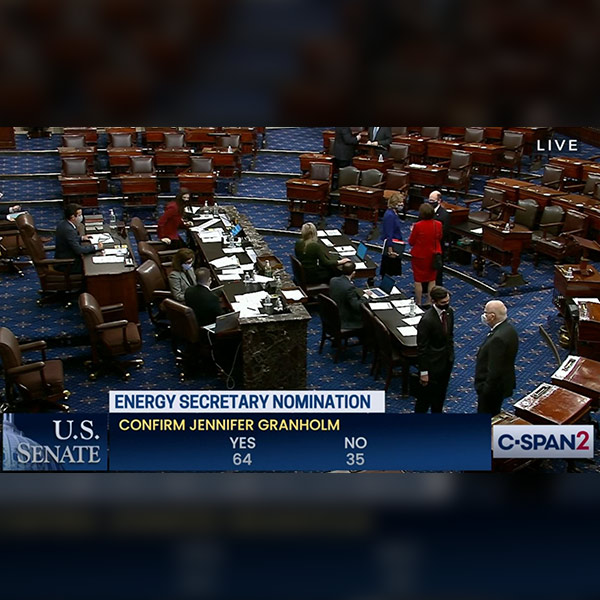
“I met with my coworkers who live in the community, whose own lives were forever impacted by the Camp Fire,” Poppe said as part of her first earnings report. “We’re so grateful to those who have the strength and the courage to represent PG&E through the rebuilding effort.”
Later, she said, she visited the city of San Bruno, where a PG&E gas pipeline exploded in 2010, killing eight, leveling part of a suburban neighborhood and shooting a fireball 1,000 feet in the air.
Catastrophic fires in 2017, 2019 and 2020 compounded PG&E’s safety problems. The company emerged from bankruptcy in June after paying billions of dollars to fire victims and insurers and pleading guilty to 84 counts of involuntary manslaughter in the Camp Fire. (See PG&E Sentenced; Bankruptcy Plan Approved.)
Poppe, the former CEO of Michigan-based CMS Energy, became PG&E’s fifth acting or permanent CEO in the past four years in January. (See Struggling PG&E Nabs CMS Energy’s CEO.)
Like those before her, Poppe vowed change as she laid out her vision for the state’s largest utility, which reported GAAP losses of $1.05/share for 2020 and earnings of 9 cents/share for the fourth quarter, compared to losses of $14.50/share and $6.84/share, respectively, in 2019.
Poppe said that a “triple-bottom-line mindset” would guide the utility’s performance this year and beyond. Known as “TBL” in economics circles, the philosophy holds that companies will do better if they focus on social and environmental responsibility along with profits.
“We will embrace the triple-bottom-line mindset of serving people, our planet and California’s prosperity,” Poppe said. “This mindset will find an intersection between the need to safely deliver energy and meet the clean energy aspirations of Californians. I’m optimistic that there is a bright path forward with a triple bottom line enabled by a laser-like focus on performance.
“Priorities to get us moving in 2021,” she said, include writing what she called a “clear sky playbook.”
“We have a best-in-class emergency response playbook, and we’re going to complement that by writing the PG&E clear-sky playbook so we can predictably deliver every day, not just during and after a crisis,” Poppe said. “I’m putting together a team of senior leaders that’s developing that clear-sky playbook, underpinned by a lean operating system, to predictably deliver us on our commitments and outcomes. We’re bringing the best of a functional organizational design — standards, processes and scale — to deliver a regionalized hometown experience for the communities and customers we serve.”
One of PG&E’s proposed reforms involves “regionalization” by establishing a number of semiautonomous management units around the state.
PG&E’s system requires substantial capital investments, and customers deserve more disciplined cost performance, Poppe said.
“Our work will deliver for our customers and investors,” she said.
PG&E has continued to attract negative publicity and harsh criticism, just before and during Poppe’s tenure.
In November, California Public Utilities Commission President Marybel Batjer told PG&E that it could face a stricter regimen of oversight and enforcement because of concerns about its line maintenance. A proposal in the matter was issued Thursday, with a vote scheduled April 15. (See PG&E Faces ‘Enhanced Oversight’ by CPUC.)
On Feb. 3, federal Judge William Alsup, who is overseeing PG&E’s criminal probation stemming from the San Bruno explosion, said he would likely impose new probation terms, requiring the company to improve its vegetation management and public safety power shutoff (PSPS) practices, following the Zogg Fire in September.
Alsup said he believed the fire — which killed four people, including a mother and her 8-year-old daughter who died fleeing the flames — was started by a tree falling on a PG&E power line in rural Northern California. (See PG&E Files Wildfire Plan Under Intense Scrutiny.)
Poppe said Thursday that PG&E would continue to use PSPS to prevent fires in high-risk areas.
On Wednesday, John Trotter, a retired state appellate court justice and the trustee of a wildfire victims trust established during PG&E’s bankruptcy, sued 23 of the utility’s former executives and officers for causing the Camp Fire and the October 2017 wine country fires.
The fires “were the outgrowth of separate and distinct wrongful acts and omissions by the defendants in breach of the defendants’ fiduciary duties of care and loyalty to the company,” the lawsuit said.
The trust, valued at $13.5 billion when the bankruptcy concluded, owns a 22% equity stake in PG&E and represents approximately 80,000 fire victims.




